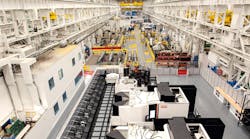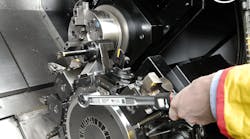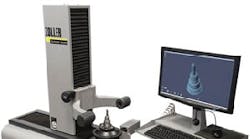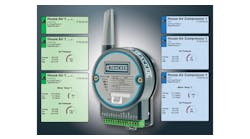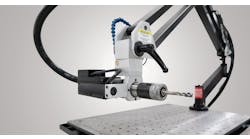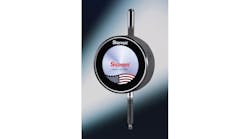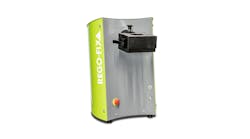Optimal production planning requires high-quality tool and technology data, and the Siemens Energy Inc. plant in Charlotte, N.C., takes a comprehensive approach to that task: 'network manufacturing'. Those two words describe a continuous exchange of experiences between the production processes and the planning functions, supported by a tool data management (TDM) system. The operators store “knowledge” about tools and their use as “work instructions” in TDM, which directly benefits planners and NC programmers. This establishes the parameters for a consistently high-quality production process: errors in planning and production are avoided, machine downtimes reduced, and productivity rises.
Siemens’ power generation business develops systems and technologies for low-CO2 electricity generation, products that emphasize a high level of efficiency in order to reduce fuel consumption. Currently, it is building a combined-cycle power plant that will have an efficiency rating in excess of 60 percent. State-of-the-art technology is contributing to the efficiency of fossil fuel-fired power stations, to achieve some significant reductions in CO2 emissions.
At the plant in Charlotte, about 1,000 employees are producing components for generators, for gas and steam turbines. CNC machines are used to mill, turn, and drill workpieces, and to hob and turn turbine blades, rotor blades, and housings.
“We have mastery of the entire range of machining processes,” according to Klemens Huch, generator operations manager at Siemens Energy Inc.
“On our numerous machines, complete items are produced with very high precision in just a few clamping operations,” he continued, summarizing a complex production process that involves more than 100 CNC machines. The vertical integration of the plant, and the high volume of parts to be produced for a wide range of turbines and generators, entails a correspondingly large number of tools. More than 10,000 tools are in use by the machines, and together these comprise more than 30,000 component parts.
Tools, adapters, and fixtures, etc., including their technology data, all require clearly structured management in order to avoid duplicate orders and redundancies, and thereby to save costs. Moreover, all of that data is needed for programming the plant’s operations.
Until a few years ago the Charlotte plant used a materials management system it had developed internally. It had reached its limit for expansion, and functionality.
“On the one hand, our old system was incapable of mapping and storing tool graphics. On the other, data maintenance was elaborate and complex,” Huch recalled. “The tool data was incomplete, which rendered them useless for many further processes.”
As a consequence, the production cells could not always rely on the tool selection in the generated NC programs. Particularly when it came to the processing of new workpieces on the CNC machines, the machine operators had to proceed very carefully in order to avoid any risk of collision. “Sure, even then we’d try to simulate the production process,” recalled Siemens Energy manufacturing engineer Eric Graber, “but the lack of adequate data maintenance for our production equipment management rendered this impossible under real-life conditions, and t represented an additional process risk.”
Often, this situation resulted in discrepancies between the NC programming and production staffs, and mutual acceptance was low. “We could never rely one-hundred-percent on the programs,” Graber explained. “If we wanted to work with any degree of process stability, we had to run in new processes very slowly, to avoid collisions, … which was very time-consuming.”
Paperless production
“Our highest objective was a paper-free factory,” said Klemens Huch. Secure, standardized processes were necessary, with digitally stored work and equipment instructions and set-up sheets, to which everyone would have access — both in NC programming and work preparation and at the machine itself.
Of one thing the production specialist had no doubt: “At the end of the day, we would only be able to develop uniform and secure production processes and draw up and define production standards if everyone was working with the same, up-to-date operating materials data.”
Once the goal had been set, the team around Huch and Garber looked for software that could be used to realize digital manufacturing at Siemens Charlotte. “At IMTS 2004 in Chicago we stumbled upon the TDM Systems tool data management system, via the tool manufacturer Walter,” Klemens Huch related.
Gery Buk, project manager/supporter at TDM Systems Inc., remembered the first contact very clearly. “As some Siemens facilities were already using TDM to manage their production equipment, we were able to talk very openly about the requirements on the software and options for implementation,” said Buk, who is responsible for project management at TDM Systems.
The fact that the TDM software in its standard modules already met most of Siemens Energy’s requirements was another advantage. It is possible to store 2D and 3D tool graphics, geometry and technology data (cutting speed, feed rate etc.) in the TDM tool database, as well as work information and set-up instructions.
Huch also was persuaded by TDM’s ability to communicate with other systems: “It was important to us that TDM offered very good interfaces with up- and downstream systems, such as SAP, CAD/CAM, and simulation, and even to presetting systems. This allowed us to integrate TDM without difficulty into our system landscape.”
This was made easier by the system’s modular construction, which aided a step-by-step approach to planning and implementation. As a first step, the team from Siemens Charlotte, and the TDM specialists decided to implement the TDM base module, with integration into the planning system (CAM and Simulation).
Then, the second step became the application at shop-floor level: inventory management, connection to the Zoller pre-setter, and gauge and calibration control. This was a significant advantage also for operations spread over more than one site.
Today the Siemens team uses the entire range of TDM data and graphic generators to create and maintain tool data and graphics. “This makes simulation a lot easier for us,” Graber stressed. “We no longer need to transfer tool data manually into Vericut, which is a huge advantage in saving time and quality.”
NC planning … integrated operation
In turbine manufacturing it is particularly important to ensure that errors do not creep into processes and tools. Process stability is the highest priority. Because of the vast number of complex parts that must be produced with precision, each year some 1,500 new NC programs are written for the machine tools. To enable the exact planning and calculation of the individual processing operations in the NC programs, the staff transfers the tools with their geometrical and technological parameters directly from TDM into the ProE tool library. There they are scheduled into each individual processing operation.
The guarantee of optimal communication is the interface developed by TDM Systems that connects the ProE and TDM tool classifications and precisely assigns tool parameters. In TDM any number of technology sets can be defined for each tool. This permits a detailed definition of the field of applications for an individual tool.
This information is available also in ProE via CAM integration. Eric Graber explained his team’s use of the software solution: “The production staff stores data documenting their experience of individual tools and tool lists. In this way an enormous pool of knowledge is created which is accessible to the planning staff.”
Meanwhile, NC programs are simulated to identify potential collisions. In that process, the high quality of the data in TDM is important to execute realistic production simulations. The virtual manufacturing process is intended to mirror real production as closely as possible, and this is the only way to recognize (and minimize) risks.
Along with the tool data, 3D tool graphics can be generated using the TDM Data and Graphic Generator, and transferred into the simulation system. Siemens’ Charlotte team uses the TDM data and graphics generator for drilling, turning, milling and solid round tools. This software tool is used to create tool items in TDM with datasets and 2D and 3D graphics. In this way, the Walter tools that Siemens uses can be set up quickly and easily, as the complete Walter standard catalog is available in digital form in the generators.
Tool construction takes place almost automatically in TDM, including both 2D and 3D graphics. Those virtual tools can then be “enriched” with the experience values from production: reliable technology data such as cutting parameters for the materials to be machined. Thus, new programs are run in quickly and securely, resulting in a continuous improvement in efficiency.
Perhaps the most accurate way to describe the production process for Siemens Energy in Charlotte is “network manufacturing.” The staff at the shop floor level documents their experience using a tool. This knowledge supports the NC programming, with respect to tool selection and calculation of the processing operations. This means that the production planners which tools really are suited to particular work processes, and which are not. “Work instructions are stored,” observed TDM manager Gery Buk. “That is, direct information concerning tools and tool lists as well as tool graphics in 2D and 3D for every tool.”
Transparent tool circulation
For each of the 50 production units the orders are prepared in a central tool assembly area. This means that the tools are assembled and preset for individual orders, ready for punctual transfer to the machine in question. The machine operators see which orders are next in line for their workstations on their control monitors, and retrieve the corresponding tool lists from TDM. In this way the staff no longer has to look for their tools; instead they remain at their machines, where they can see that their tools have already been scheduled in.
Some 50 members of Siemens staff use the transparent and up-to-date database in their work every day.
“Thanks to TDM we have standardized production processes, which work almost entirely without paper,” Klemens Huch concluded. “The central TDM database secures a high, uniform quality standard, and the staff on the machines can rely on the NC programs and work instructions.”
There is an additional benefit: The acceptance of, and confidence in, the IT department demonstrated by the production staff has increased. “There is now a regular exchange of experience from both sides,” said Eric Garber, with obvious satisfaction. “we really are running a manufacturing networking operation.”
